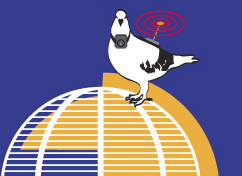Carriers of bodies and histories, knowledge and culture. Deborah Lawler-Dormer New Zealand Aotearoa is an Oceanic/Pacific country settled by Eastern Polynesians 700 - 1000 years ago. Innovative voyagers, Maori migrated in waka (canoes). Contemporary Maori iwi (tribes) trace their genealogy back to the waka from which iwi were named. They pass knowledge and genealogy through traditions of oratory (whaikorero) and art practices including waiata (song), whare whakairo (carved meeting house), tukutuku (woven wall panels in the meeting house), and the building of waka. What is also passed on is the innovative spirit of their ancestors. Rachael Rakena is a Maori artist of Ngai Tahu tribal descent. She uses digital technologies in installations that voyage far from the materiality of traditional Maori arts while resonating with Maori values of innovation in this new century.  Like the voyaging, navigating and genealogy sustaining practices of her forbears, Rakena’s digital technologies establish concepts of ‘continuum, immersion, movement, space’ as being particularly relevant to cultural processes of ‘connecting and belonging’. The artist has devised the term Toi Rerehiko for digital art. She says, “The word rerehiko plays on rorohiko, the Maori word for computer, which translated literally means 'electric brain'. The word rerehiko has recently been used to mean 'electronic'. Toi rere hiko could be used to describe moving image arts or at least art that employs movement with electricity and flashes of light. That which flies, settling momentarily, but leaving no object."
For the past eleven years, Rachael Rakena has been part of KTW, an urban tribal group from Dunedin (Te Whanau o Kai Tahu ki Araiteuru ). The KTW collective maintains regular physical and virtual gatherings and networks and often operates collaboratively. In 2002, Rakena invited KTW to collaborate with her in Rerehiko as artists, authors and performers. Rerehiko displays complex references to community debate through email and contemporary kapa haka (traditional Maori performing dance). The work expresses the group's identity in a fluid cyberspace where relationships are virtual rather than geophysical and where contemporary technologies can nurture communities that continue to be imbued with cosmological and genealogical narratives. The narrative and communication medium of sea/water is a metaphor both for an amniotic space anticipating birth and for contemporary and historic oceanic migrations and journeys.  Rerehiko acts as a conduit to the later work Pacific Washup – a collaboration with the Pacific Island artists Fez Fa’anana and Brian Fuatu in Sydney, Australia. The artists’ continuing interest in migration and immigration appears in their video documentation of a performance carried out during Australia’s repressive legislative response to refugees and the inflamed political debates that ensued. Substantial Maori and Pacific Island communities in Sydney face issues of cultural dislocation. Dynamic issues of migrant identity politics are reflected in video footage of performers encased in cheap bags being gently washed to shore. Both Rerehiko and Pacific Washup operate within a complex nexus of contemporary and traditional issues and technologies. They belong in a continuum of cultural practices addressing ongoing issues of cultural journeying, belonging and identity. |
